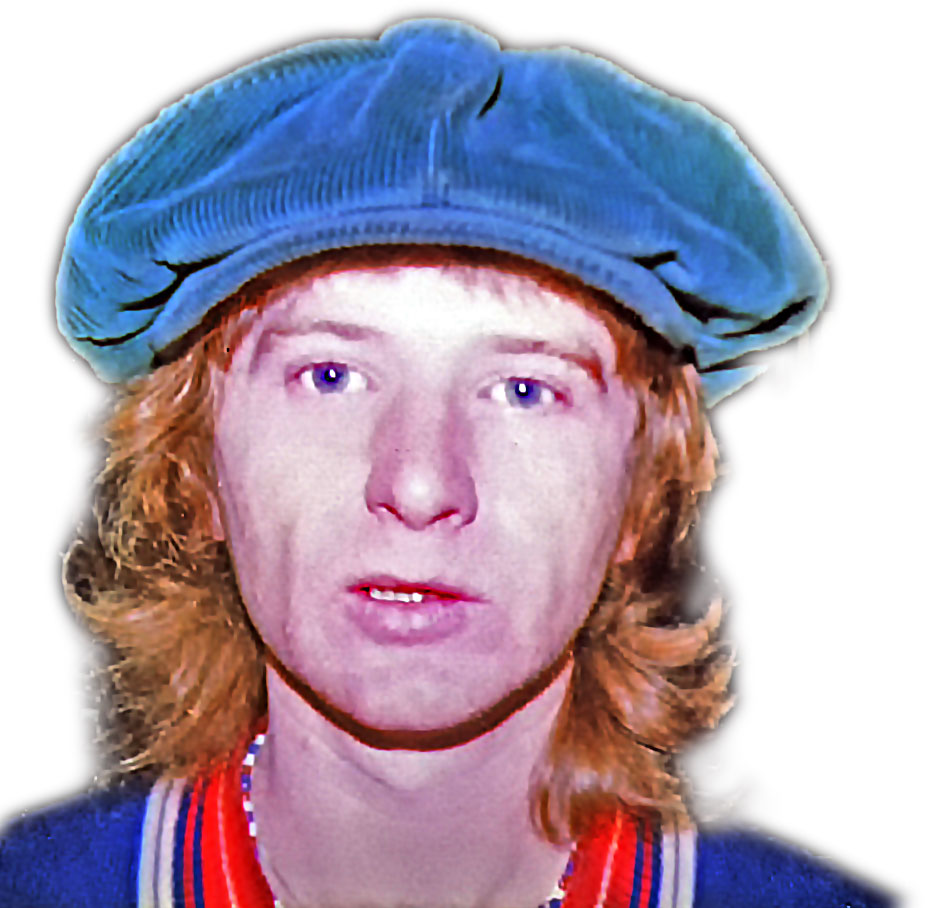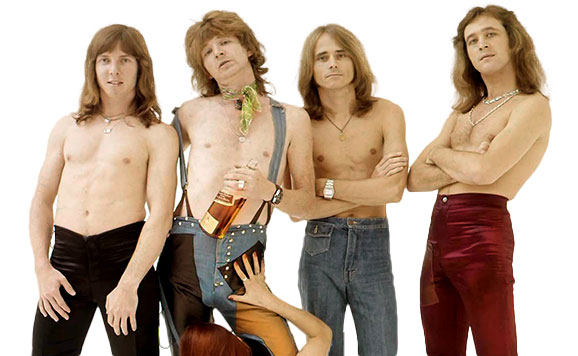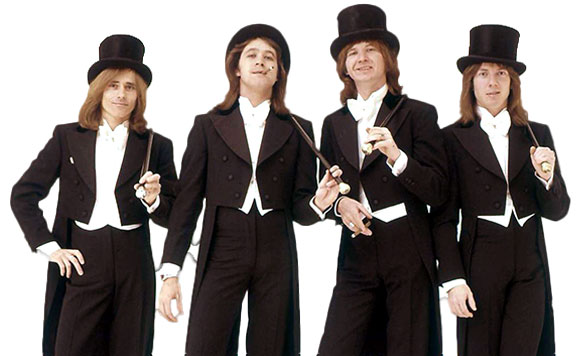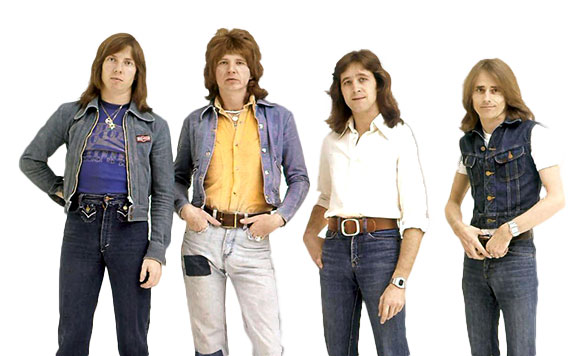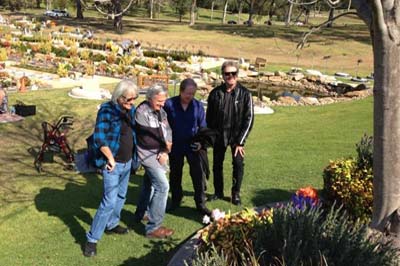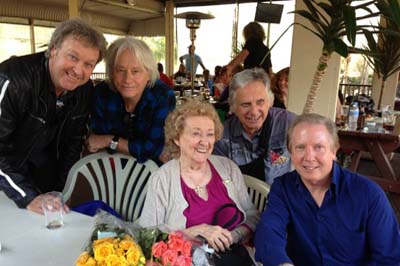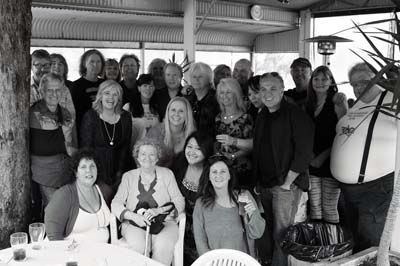Velvet Underground Biography
Velvet Underground had their beginnings during October 1967 in Newcastle, NSW Australia.
Formed by Russell Bayne (Guitar), Herman Kovacic (Drums) and Mark Priest (Organ), all of whom had previously been in another Newcastle Band, The Oubbe (pronounced Web), with the addition of David Schofield on Bass Guitar and Steve Phillipson on Vocals, who had recently arrived from Brisbane.
Steve Phillipson had been the President of the Rolling Stones Fan Club and certainly knew how to move like Jagger. He was also an avid reader of avante garde books, and it was he who came up with the name from the title of a book, “The Velvet Underground”, published in 1963 by journalist Michael Leigh about paraphilia in the USA,
After a few months of occasional weekend shows, they rapidly built up a strong following around the dance clubs and suburban community hall dances in Newcastle, sometimes pulling larger crowds than better known Sydney and national recording acts. Initially the repertoire of songs was heavily influenced by The Rolling Stones, The Doors and The Small Faces. At this time their stage show included smashing up televisions. After putting out a request in the local newspaper for unwanted televisions, they were inundated and couldn’t smash them up quickly enough.
Not long after winning a local Battle of the Bands, Russell Bayne departed and was replaced by Les Hall, who was a member of Maitland Band, The Influence of Cecil Rhodes. By this time, Steve Phillipson had adapted his fire act to suit the Doors, Light My Fire. The band had a lot of virtuosity and would see Les singing a few Small Faces songs and Herman out front singing while Steve played drums. This line-up of Velvet Underground recorded 3 tracks at Vista Studios in Newcastle in 1968, It's Alright (a cover of a song by Ray Charles), Stop in the Name of Love (a cover of a song recorded by the Supremes) and All or Nothing (a Small Faces track). These were never released but 10 copies were pressed on acetate.
Then in July of 1968 David Schofield left the band as he was an Apprentice Electrician and was not available to do some shows due to shift work. He was replaced on bass guitar by Mick Garvie.
The band had been signed by Ivan Dayman (Sunshine Records), to tour in Queensland, and Mick was not able to do this, so he was replaced at the end of September 1968 by Stephen Crothers, a former band mate of Les from The Influence of Cecil Rhodes.
Velvet Underground toured Northern NSW supporting the 1968 Hoadley Battle of the Bands winner, The Groove, and followed this up with several dates in Queensland supporting Jonne Sands and Normie Rowe (Sunshine Artists), as well as a residency for six weeks at Prinz Alfreds Disco in Brisbane. Soon after their return from Brisbane the band spent time in Wollongong where they worked at the Ivan Dayman owned, Wonderland, sleeping on the stage during days off.
In January 1969, Mark Priest was replaced on keyboards, by Tony Heads, another former band mate of Les from The Influence of Cecil Rhodes. At the beginning of April 1969, the band commenced a six month residency at The Down Under Disco in King Cross. This was at the height of the war in Vietnam and many venues in and around Sydney were havens for American Servicemen on R & R. It was during this time that the band became aware of the existence of The Velvet Underground in America, but Abe Saffron who owned Down Under thought this was good for his business and so the name stayed. By the time the residency had finished, the name had become synonymous with the popularity of the band throughout Sydney. While performing at Down Under they had changed the fire act to be part of the song “Fire” by Arthur Brown.
In early 1970 the line-up of Steve Phillipson, Les Hall, Herman Kovacic, Stephen Crothers and Tony Heads recorded at United Sound Studios in Sydney and on February 5, 1970 “Somebody to Love” b/w “She Comes in Colours” was released. The following day Velvet Underground appeared on Graeme Webb’s Blind Date and performed “Somebody to Love”, live, complete with the human torch fire show of Steve Phillipson. This was to be the only recorded product officially released by Velvet Underground.
In late June 1970 this same line-up once again entered the studio at United sound where they recorded Lola (a cover of a song by the Kinks) and All Right Now (a cover of a song by Free). Both songs had been banned from airplay in Australia due to the dispute between Radio Stations and English based record companies. These recordings were not released as the dispute ended several months later.
In September 1970 Tony Heads left the band and they continued as a four piece.
In December 1970, Steve Phillipson left the band, just after they had moved from Haberfield (an inner western suburb of Sydney near Burwood) to Mona Vale on the Northern Beaches peninsula.
The band continued to work as a trio with singing duties being shared by Les Hall and Stephen Crothers.
In January 1971, Malcolm Young joined the band on second guitar (only a few weeks after his 18th birthday) and Brian Johnson was the new vocalist. This combination only lasted six weeks as Brian worked shifts on the New South Wales Railways, and this restricted the band (ala David Schofield and Mick Garvie in 1968).
At the start of March 1970 Andy Imlah became the new vocalist. Andy had previously been with Elmtree, a band which like many of that era had two vocalists, the other of whom was John Young (JPY).
With this line-up they had moved away from the keyboard dominated sound to a more aggressive hard guitar sound. In June, long time member, Stephen Crothers left the band to pursue a career in Veterinary Science and was replaced on bass guitar, by Mick Szefcyk. Some original songs were recorded in a makeshift studio, in the garage, at 12 Seabeach Avenue in Mona Vale. These recordings have never been released. During this time, Velvet Underground made attempts to change the name and worked as Pony and Velvet.
George Young, Malcolms Brother, had encouraged Alberts into taking an interest in his younger brother and in August 1971, legendary producer Simon Napier Bell came out to Liverpool Masonic Hall, Sydney NSW, to see the young Young. On this night Velvet Underground were sharing the bill with Elmtree and Ted Mulry and a few days later Alberts signed up the young Young but it was John Young (JPY). In the latter part of 1971, the band were making plans to go to England, Malcolm was always saying “if you get to the top in Australia, you are still at the bottom in England, it is better to do all the hard work in England which then puts you on top in Australia”. George, in England, was setting things up for an easy transition into a new market. There had been interest from a booking agent, he had found a place for the band to live, but a new name was needed. In January 1972, during a tour of Northern NSW and when we were sleeping out in the open, because the promoter had failed to get accommodation, Malcolm uttered the immortal words “It’s rock ‘n’ roll, it wasn’t meant to be a bed of roses”. On a day off, when we were playing cards, Malcolm said the name of this game is better than the band name!!! Herman walked in and said who’d pay to see a band called Acey Deucey (the card game) and we all laughed.
Quite obviously the overseas venture didn’t happen and both Malcolm and Andy left the band at the end of May 1972. Dave Evans joined as the new vocalist. By this time Velvet Underground had become the prominent backing band for Ted Mulry, who after his return from England, had a strong desire to be part of a rock band and was filling in on rhythm guitar at some concerts. At the end of August 1972, after fulfilling a contract with hair shampoo company, Pantene, and Manly Warringah Rugby League Club, Velvet Underground dissolved.
MEMBERS
Russell Bayne – October 1967 to April 1968 – Guitar
Mark Priest – October 1967 to January 1969 – Keyboards
Herman Kovacic – October 1967 to August 1972 – Drums
David Schofield – October 1967 to July 1968 – Bass Guitar
Steve Phillipson - October 1967 to December 1970 – Vocals
Les Hall – April 1968 to August 1972 – Guitar and Vocals
Mick Garvie - July 1968 to September 1968 – Bass Guitar and Vocals
Stephen Crothers – September 1968 to June 1971 – Bass Guitar and Vocals
Tony Heads – January 1969 to September 1970 - Keyboards
Malcolm Young – January 1971 to May 1972 – Guitar and Vocals
Brian Johnson – January 1971 to March 1971 – Vocals
Andy Imlah – March 1971 to May 1972 – Vocals
Mick Szefcyk – June 1971 to August 1972 – Bass Guitar and Vocals
Dave Evans – May 1972 to August 1972 – Vocals
POST VELVET UNDERGROUND
Russell Bayne – joined Pyramid and had a moderate hit with “Can’t Wait ‘til September”, written by George Young and Harry Vanda.
Steve Phillipson went on to have a short solo career, and was a founding member of Sun, with whom he played guitar, and whose vocalist was Renee Geyer. He recorded a solo album at E.M.I in Sydney which was never released. Sadly, he passed away in 1973.
Stephen Crothers and Tony Heads joined with Peter Sheehan (former members of the Influence of Cecil Rhodes and all from Maitland Boys High School) and formed Hiawotha (a band in a similar vein to Emerson, Lake and Palmer) working around Sydney and NSW.
Malcolm Young and Dave Evans formed AC/DC in December 1973.
Herman Kovacic, Les Hall and Ted Mulry (with Steve Hart from Hot Cottage on Bass) became the Ted Mulry Gang in September 1972.
